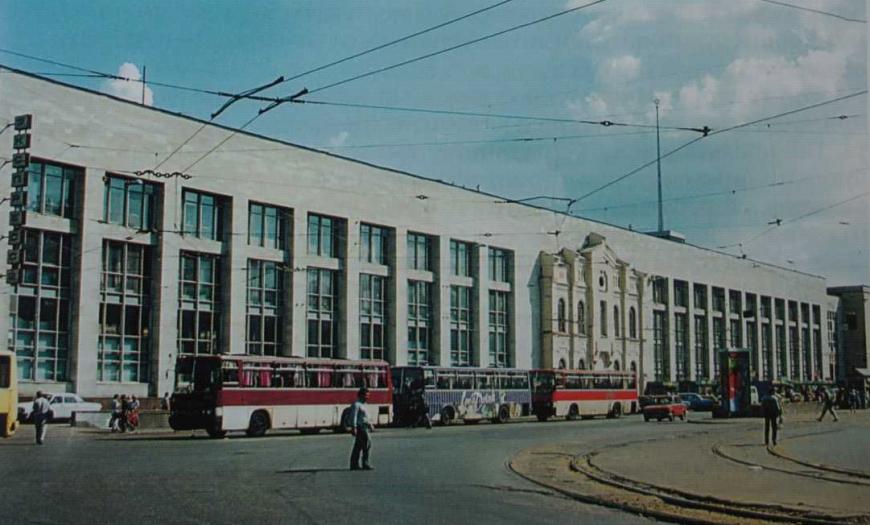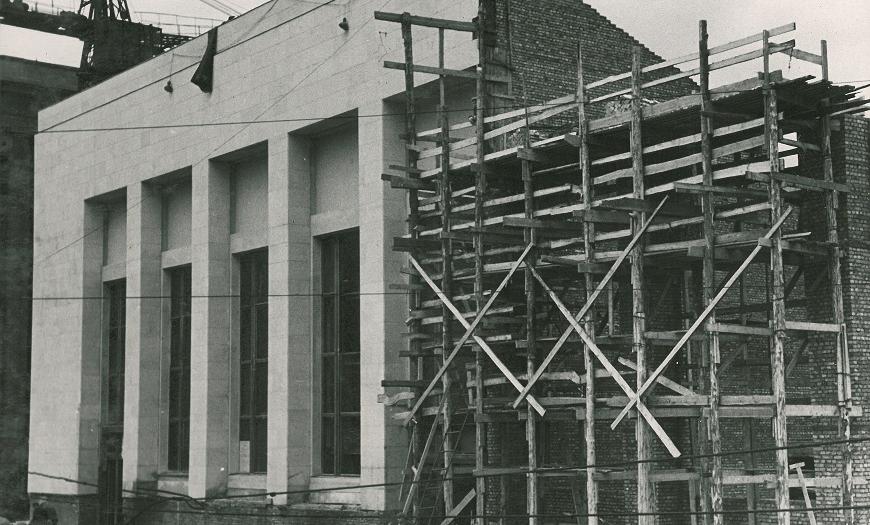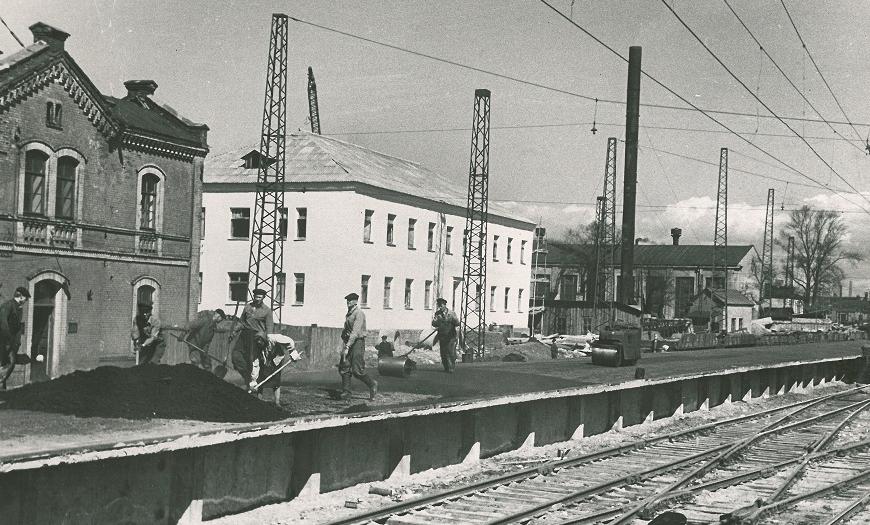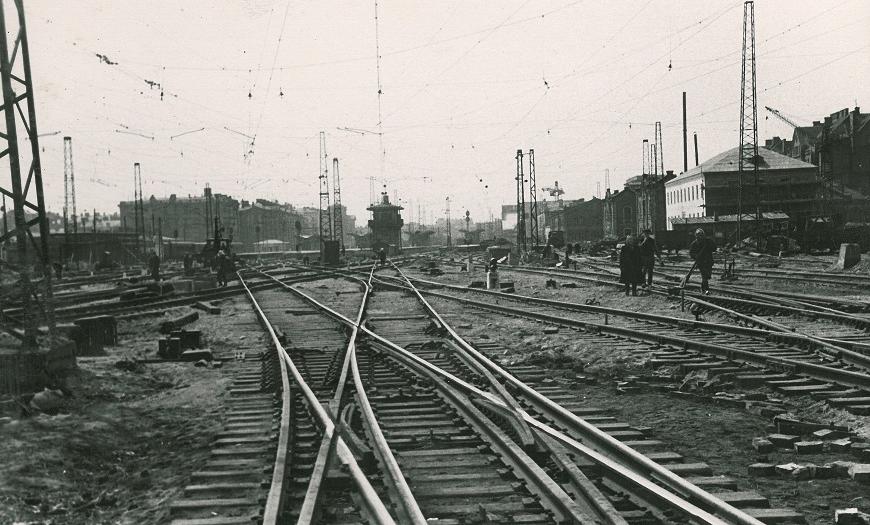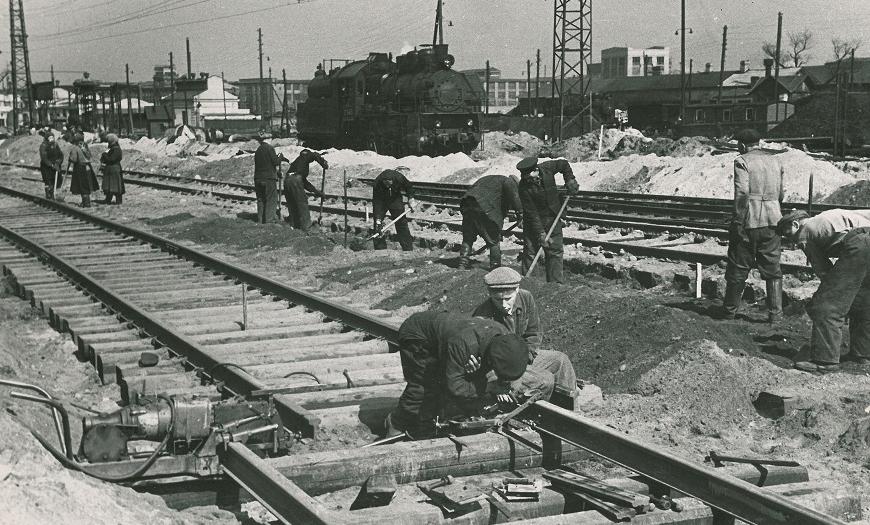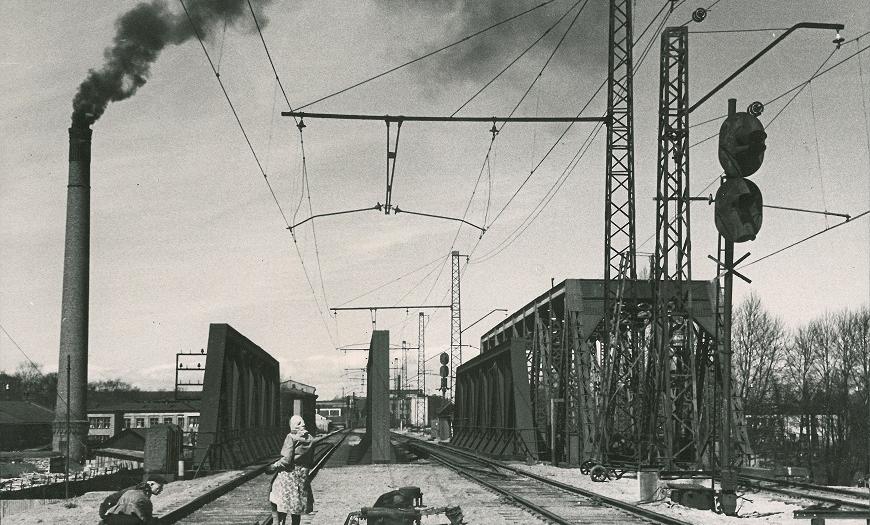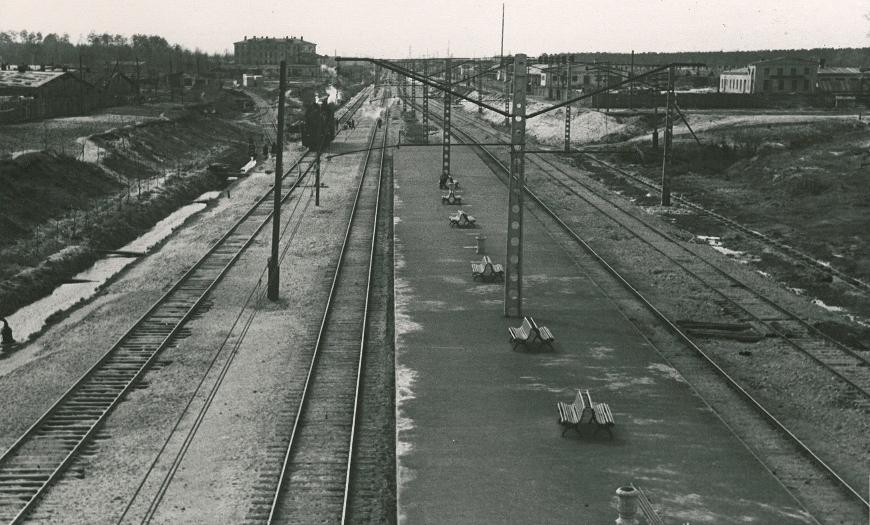Finlyandsky railway station was built in 1870 for the railway connecting St. Petersburg with the Grand Duchy of Finland. During the years of the blockade, it was the only operating station: the "Road of Life" began here, and in 1943 the first train with food arrived along the "Road of Victory".
During its existence, and especially during the war years, the building of the station has undergone severe damage: the wing of the building was destroyed, the waterproofing was broken, because of which the water rose along the brickwork to the 2nd floor. For this reason, in 1950–1960, Lengiprotrans engineers designed a comprehensive reconstruction of the Finland Station. The renovation of the station was carried out in 2 stages, which included the creation of a new part of the station and the modernization of the old one.
At the 1st stage, a new station building was designed on the site of the old railway structures. The new building organically enclosed the wide station square with the historical monument of V.I. Lenin. The frieze of the building is crowned with bas-reliefs on a historical and revolutionary theme; a glass tower rises above the building.
For the first time in the large distribution hall of the station, overlapping with a monolithic reinforced concrete vault-shell measuring 33x33 m with an area of more than 1000 m was applied.
At the end of the 1960s, at the second stage of work, the reconstruction of the old part of the station was developed: a large complex of work was carried out to reconstruct the Leningrad-Finlyandsky station with the construction of new platforms and a cross pedestrian tunnel. These works were completed with the commissioning of the station building on Komsomol Street with an integrated lobby of the Lenin Square metro station.
However, due to the increasing passenger traffic, it became necessary to further expand the old station building. The condition for the reconstruction was the preservation of the "Lenin rooms" - a branch of the V.I. Lenin. Therefore, an option was adopted to preserve the museum, including the platform and city facades, and the new building was interpreted as a backdrop for them.
At present, the Finlyandsky railway station is an integral building connected by a passageway to the lobby of the Lenin Square metro station. The central risolite - a preserved part of the old building - has become an interesting compositional accent and is a state historical monument.
Author's department:
Project Status:

